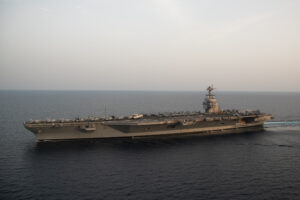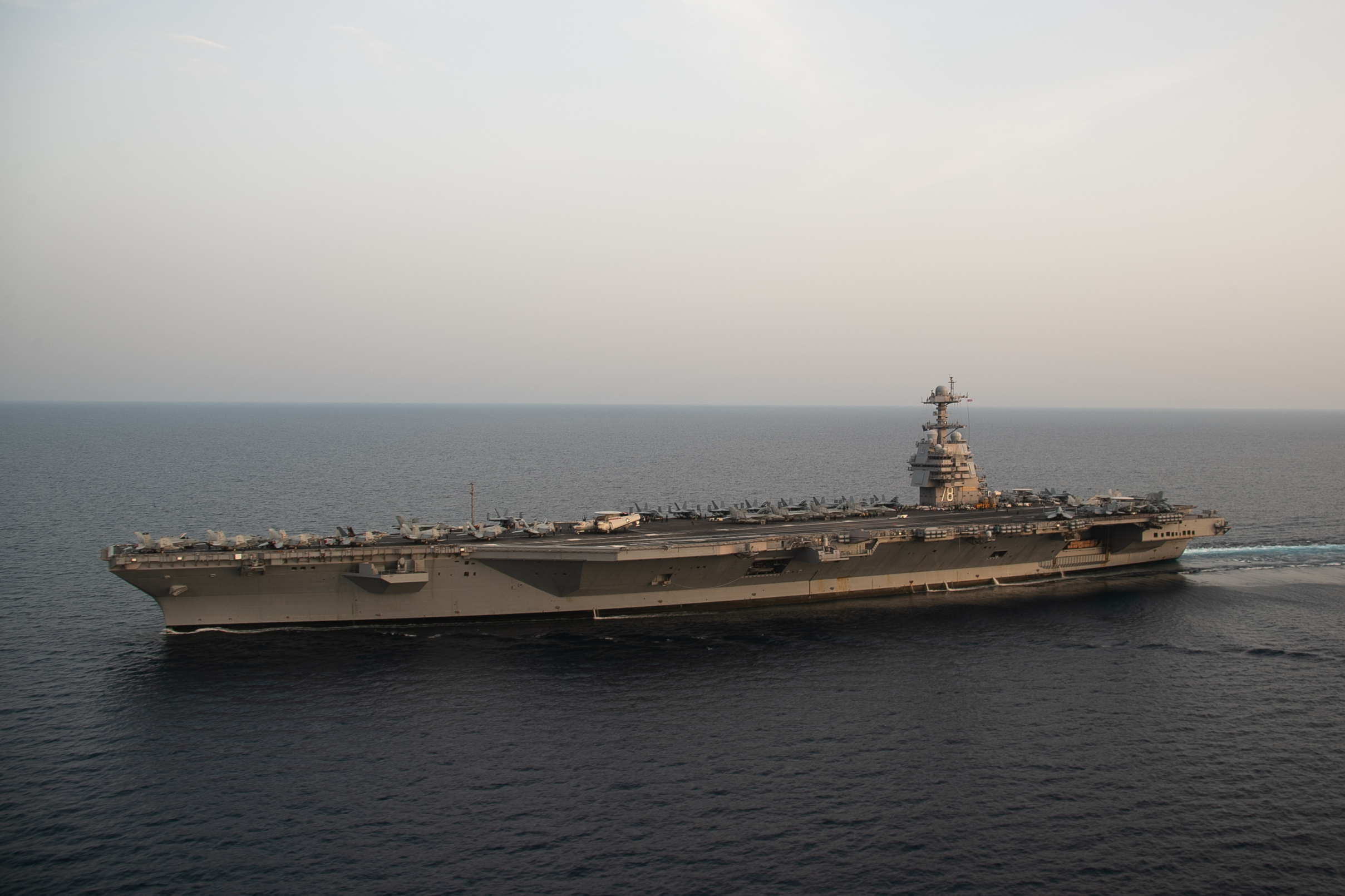The next two Ford-class aircraft carriers are running significantly behind schedule than previously estimated, a Navy official told lawmakers last Tuesday.
In his opening oral and written statements before the Senate Armed Services Seapower subcommittee, Rear Adm. Casey Moton, program executive officer for Aircraft Carriers, said the future USS
John F. Kennedy (CVN-79) is 95 percent complete but its delivery timetable, last expected for July 2025, is running late, or pressurized, due to “remaining critical path work.”

This is largely focused on issues with the Advanced Weapons Elevators (AWE) and Advanced Arresting Gear (AAG), Moton said.
The Navy’s sole builder of nuclear-powered aircraft carriers in HII Newport News Shipbuilding [HII] in Virginia.
“Initial class design challenges are resolved, as evidenced by Ford’s successful operations, however, early class production-focused challenges and associated learning continue on CVN-79. All lessons learned and improvements by both the Navy and industry teams are being implemented in construction on CVN-80 and 81. The Navy and shipbuilder [HII Newport News Shipbuilding] are hyper-focused on a CVN-79 delivery plan that results in the fastest path to a combat ready CVN, crew, and air wing,” Moton said.
Under questioning by Sen. Tim Kaine (D-Va.), Moton underscored the shipbuilder’s challenges with CVN-79 are not design-related.
“The elevators and the catapults and the aircraft launch-recovery gear are performing exceptionally…this is the second in class, we’re still learning a lot of lessons on production,” Moton replied. “These are complex machines and that’s what we’re seeing.”
He added the Navy and HII are executing a variety of improvements on CVN-79 but especially the following carriers, the future USS Enterprise (CVN-80) and Doris Miller (CVN-81).
Kaine indicated his information is that CVN-79 will be delivered in March 2026, rather than July 2025.
Moton admitted the AWE and AAG issues will further delay the Kennedy without admitting a specific timetable.
“We are focused very much on mitigating that and getting to combat readiness as quickly as possible and we’re assessing that and we’ll have more details,” he said. “But we are looking at all avenues to improve the timeline that I can get JFK to the fleet.”
Moton also said that delays to “sequence critical material” for the Enterprise are forcing its existing delays to lengthen two more months from a 2024 estimate of 26 months late to now 28 months late, in 2030.
He explained this kind of major material items are causing delays to the ship construction critical path and “forcing the shipbuilder to change our build cycle. We are doing everything we can to get that equipment, intense oversight from both the Navy and Newport News Shipbuilding.”
However, he assessed that critical parts performance has “continued to degrade” such that it is a further two months behind schedule.
Moton said the Navy is doing everything it can with HII to improve the 28 month delay prognosis.
In contrast, Moton confirmed the following carrier, the Doris Miller is still on track for delivery in 2032.

He said CVN-81 is on schedule because they bought the material earlier than for Enterprise to prevent these critical path challenges and worked with HII to modify their drydock such that it can build Enterprise and Doris Miller at the same time.
When pressed by Sen. Richard Blumenthal (D-Conn.), Moton noted CVN-79 is now projected to cost $12.9 billion, CVN-80 $13.5 billion, and CVN-81 $14 billion.
The original USS Gerald R. Ford (CVN-78) was procured using a cost-plus contract as the lead ship, while he said CVN-79 to 81 are fixed-price contracts with incentive share lines, where shipbuilder profit degrades as building costs go up.
Moton was unwilling to provide HII’s expected initial and delay-adjusted profit figures for these carriers in an open hearing, but confirmed the Navy has the figures and can share it with the committee separately.
